Maps, graphics and charts explaining the Canada and north-west US heatwave, with temperatures at nearly 50C.
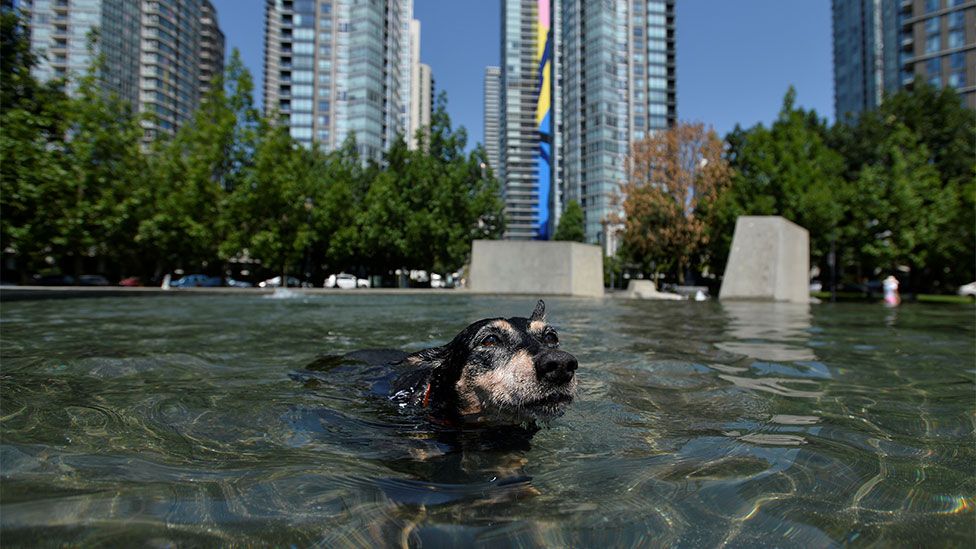
image copyrightReuters
A blistering heatwave has hit Canada and parts of the US, sending temperatures to dangerous highs of nearly 50C (122F).
Hundreds of people have died.
Here’s what we know about what is going on.
Temperature records have been shattered across western Canada and the US Pacific Northwest.
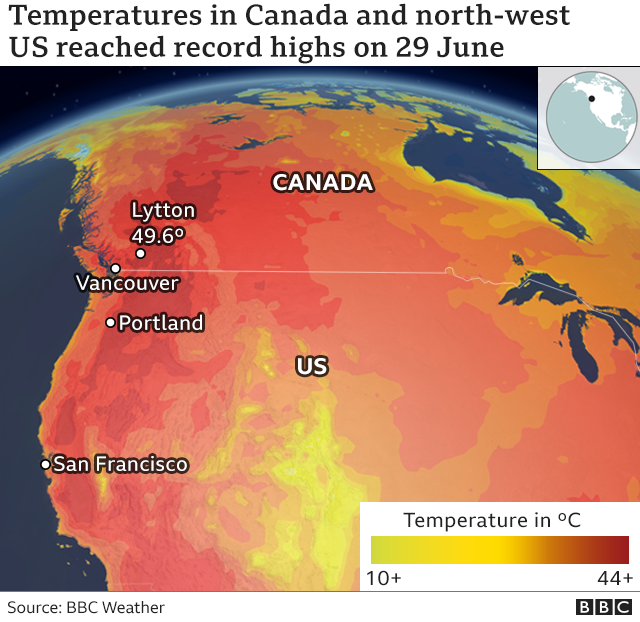
Canada broke its country temperature record for a third straight day on Tuesday – 49.6C (121.3F) in Lytton, British Columbia.
Before Sunday, temperatures in the country had never passed 45C.

The heat has been blamed for helping cause the deaths of dozens in the Vancouver area.
The US north-west has also seen record highs – and a number of fatalities.
Portland, a city with a famously rainy climate, broke its all-time high temperature record for three days in a row.
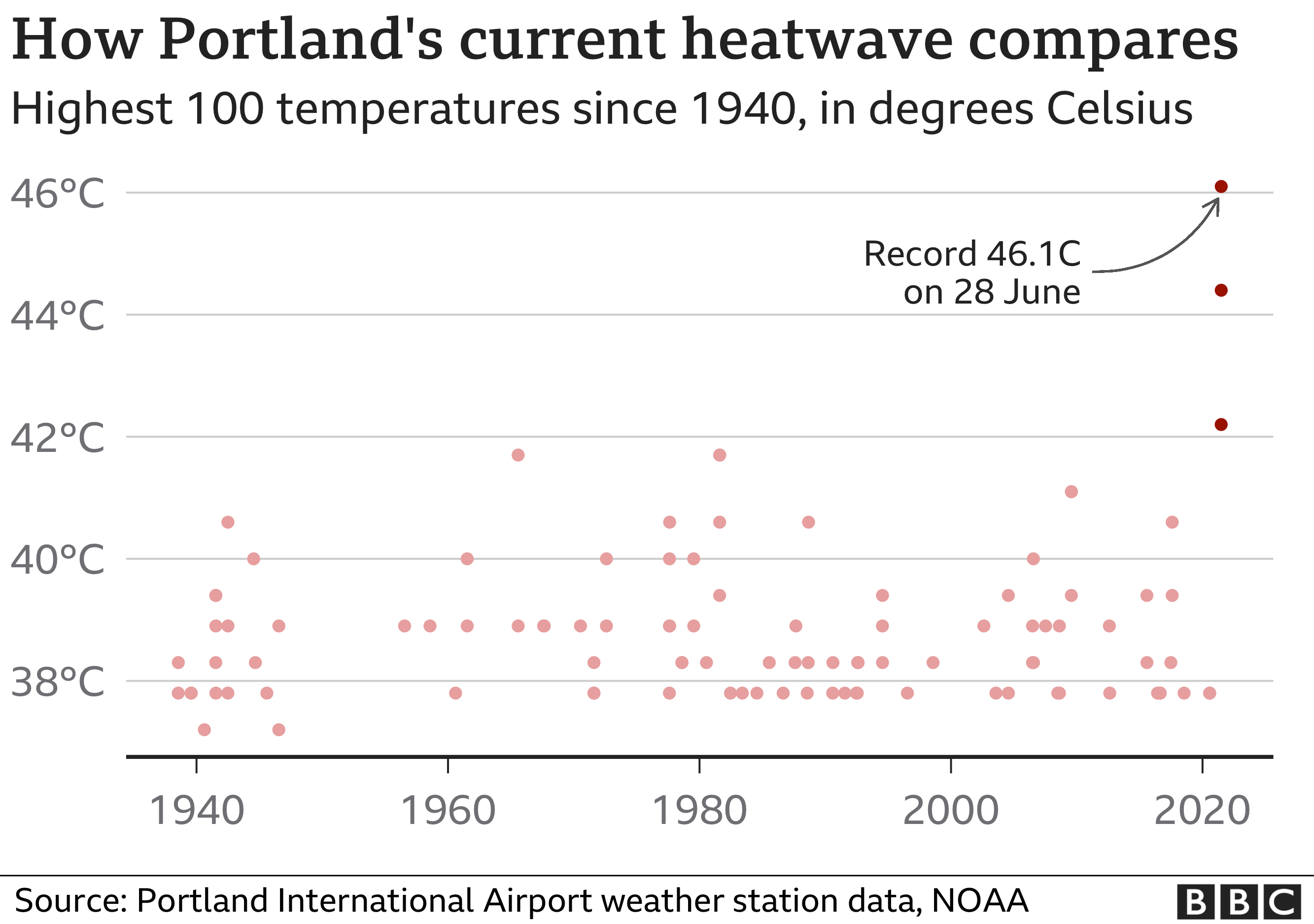
The temperature at Portland International Airport peaked at 46.1C on Monday, going above the previous day’s high of 44.4C and Saturday’s 42.2C, according to the US National Weather Service.
At least a dozen deaths in Washington and Oregon are believed to be linked to the heatwave.
The searing temperatures have left many vulnerable people struggling in the sweltering heat.
The region’s climate is typically mild, and many homes do not have air conditioning, which might help explain the sudden rise in deaths.
Many have been forced to take refuge in cooling centres – air-conditioned buildings, such as stadiums, where residents can work and sleep.
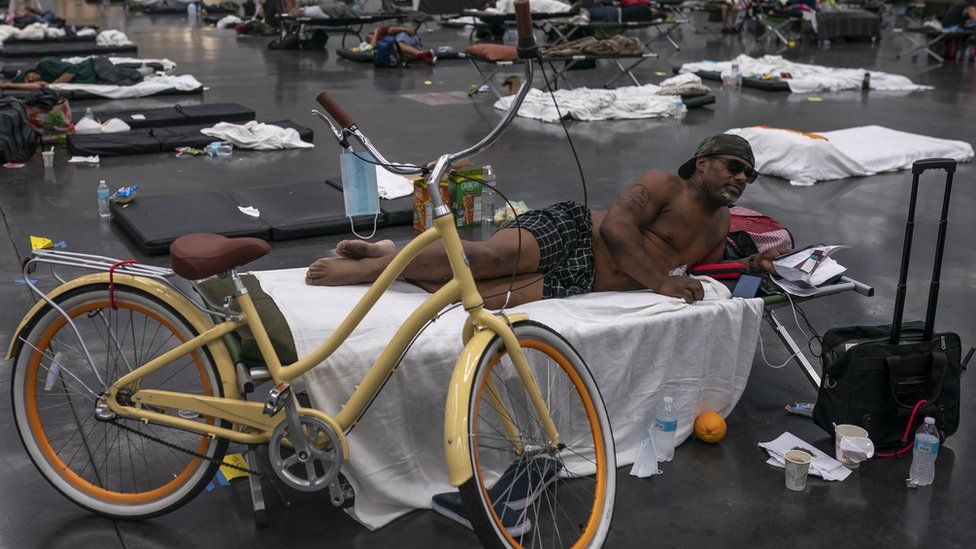
image copyrightGetty Images
People and infrastructure in urban spaces, absorbing more heat than greener, rural areas, have been particularly affected by the high temperatures.
The heat has been so intense it has melted power cables and buckled roads.
In Vancouver, residents have reported car windows cracking and melting, even when they are not parked in the sun.
Vaccination centres have been forced to close or relocate, schools have shut their doors and some public transport has been suspended – including the Portland Streetcar Service.
Elsewhere, shops have sold out of portable air conditioners, fans, ice and water.
The persistent high temperatures are the result of what is known as a “heat dome” – a mountain of warm air pressing down across a huge area and refusing to move.

As warm air tries to rise, this high pressure system above pushes the warm air back down to the surface. It becomes denser and hotter as it gets compressed.
Experts say climate change is expected to increase the frequency of such extreme weather events, such as heatwaves. However, linking any single event to global warming is complicated.
The weather system is now moving eastwards over Canada’s Prairie provinces – Alberta and Saskatchewan and parts of Manitoba have been placed under heat warnings.
Weather forecasters say the heat is starting to ease near US western coastal regions, and in Seattle and Portland, but is expected to last all week in the interior areas of the Pacific Northwest.
This mass of hot air has lasted so long because it is bending the jet stream – a current of fast-flowing air high in the Earth’s atmosphere – around it and preventing cooler weather from moving in.
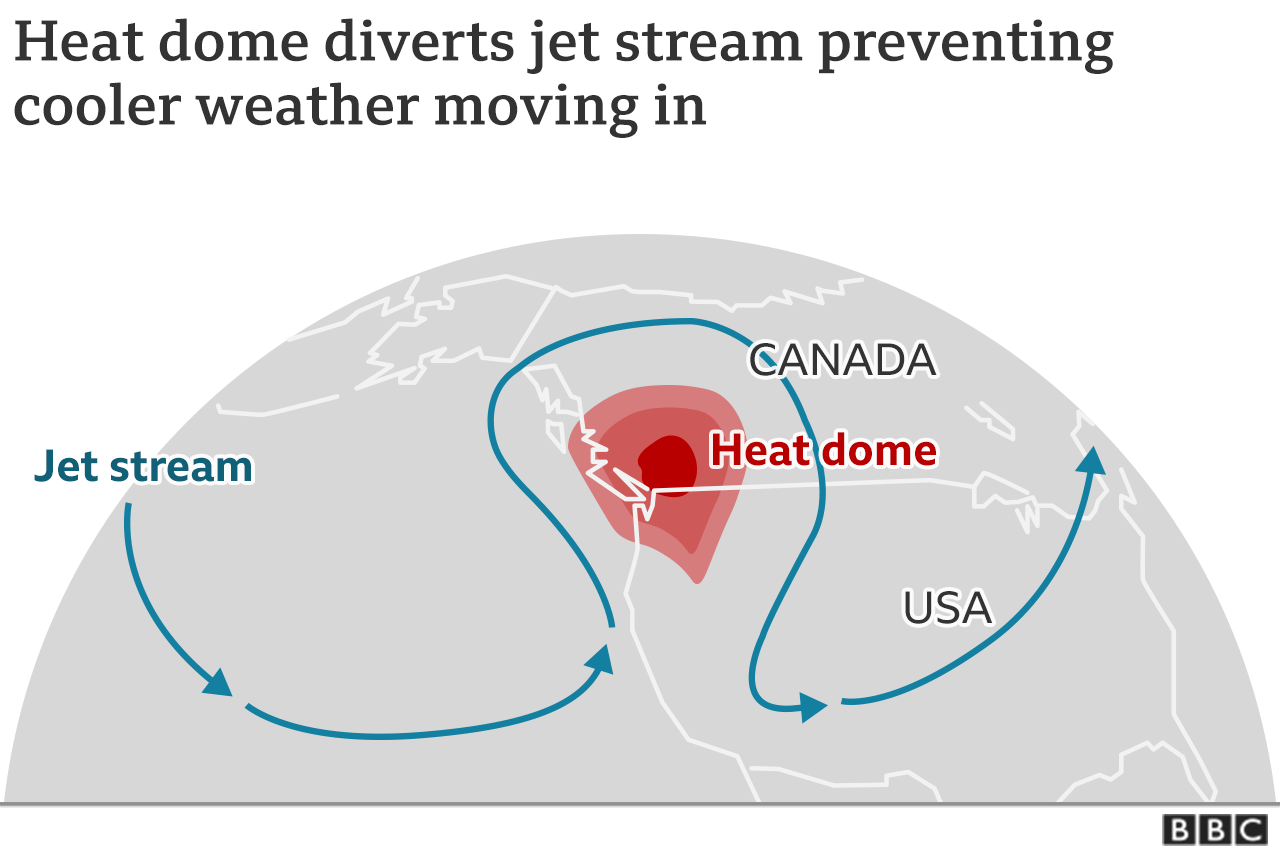
You should cool off immediately if you have the following symptoms: headaches, feeling dizzy, loss of appetite, nausea, excessive sweating, cramps, fast breathing and intense thirst.
If your body’s temperature hits 40C (104F), heatstroke can set in, which requires urgent medical help. Danger signs include sweat stopping – the person may feel hot, but dry – and breathing difficulties.
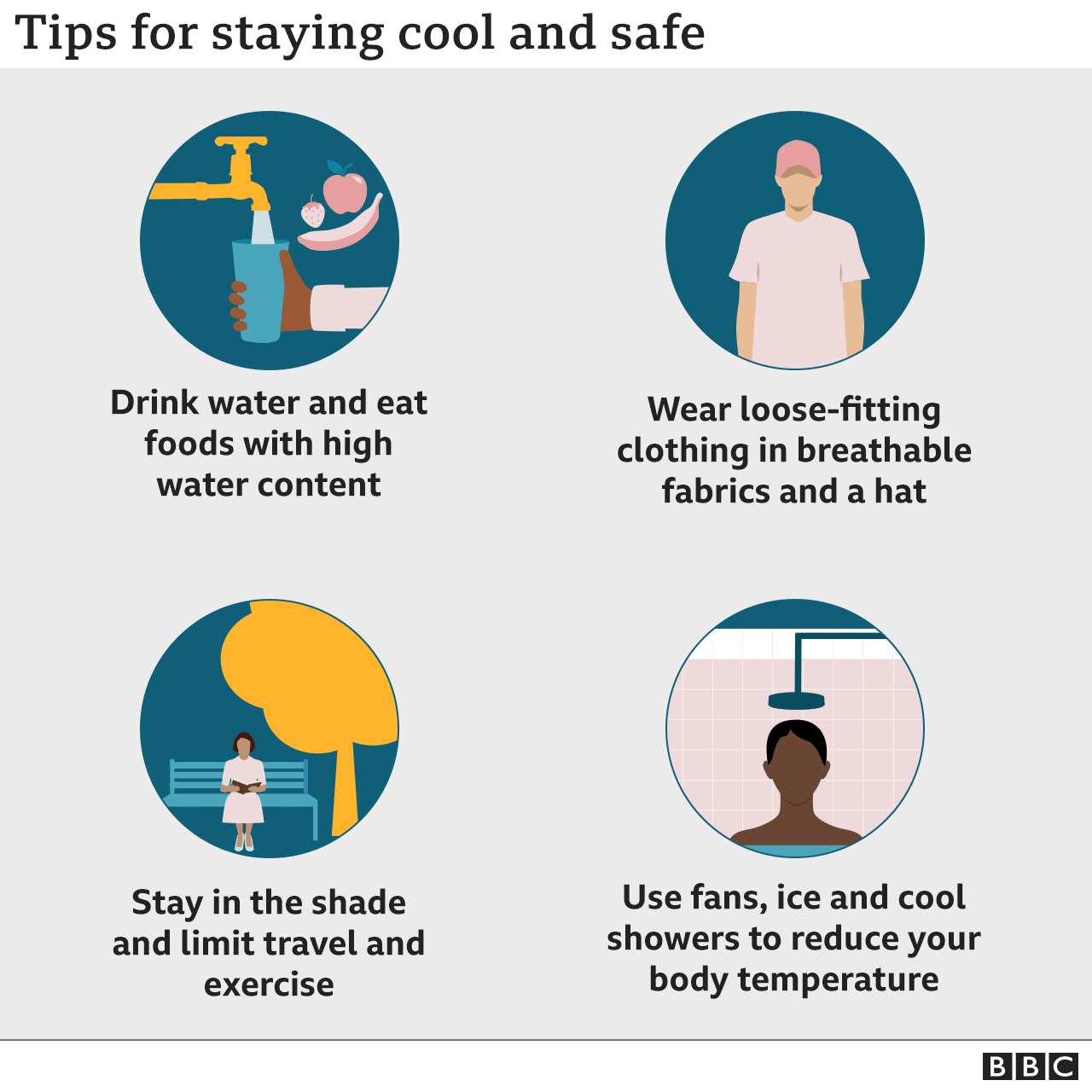
By Mike Hills, Sana Jasemi, Lucy Rodgers, Joy Roxas, Paul Sargeant, Nassos Stylianou, Alison Trowsdale.